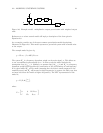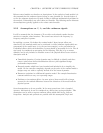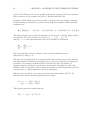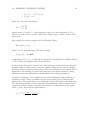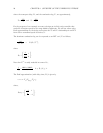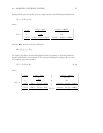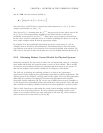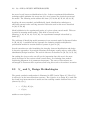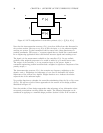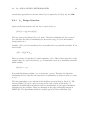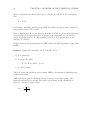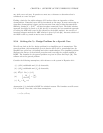2.3. H
∞
AND H
2
DESIGN METHODOLOGIES 29
An area of work, known as identification in H
∞
, looks at experimental identification
techniques which minimize the worst case H
∞
error between the physical system and
the model. The following works address this issue: [27, 28, 29, 30, 31, 32, 33, 34, 35].
Applying the more standard, probabilistically based, identification techniques to
uncertain systems is also receiving attention. Relevant work in this area is described
in: [36, 37, 38, 39]
Model validation is the experimental testing of a given robust control model. This can
be useful is assessing model quality. This work is covered in the
following: [4, 40, 41, 42, 43, 44, 45, 46]. An experimental example is described by
Smith [47].
The problems of identifying model parameters in an uncertain model is discussed further
in [48, 49, 50]. A nonlinear ad-hoc approach for obtaining suitable multiplicative
perturbation models for certain classes of systems is given in [51].
Several researchers are also formalizing the interplay between identification and design
in iterative approaches. In practical situations the designer usually ends up with ad-hoc
identification/design iterations. The work in this area is described in [52, 53, 54, 55, 56].
On reading the above works, one will get the impression that this area is the most
poorly developed of the current robust control theory. In obtaining these models
engineering judgement is of paramount importance. The users of this software are
encouraged to document their experiences and bring this work to the authors’ attention.
2.3 H
∞
and H
2
Design Methodologies
The generic synthesis configuration is illustrated in LFT form in Figure 2.7. Here P(s)
is referred to as the interconnection structure. The objective is to design K(s) such that
the closed loop interconnection is stable and the resulting transfer function from w to e
(denoted by G(s)),
e = F
l
[P(s),K(s)]w,
= G(s)w,
satisfies a norm objective.



